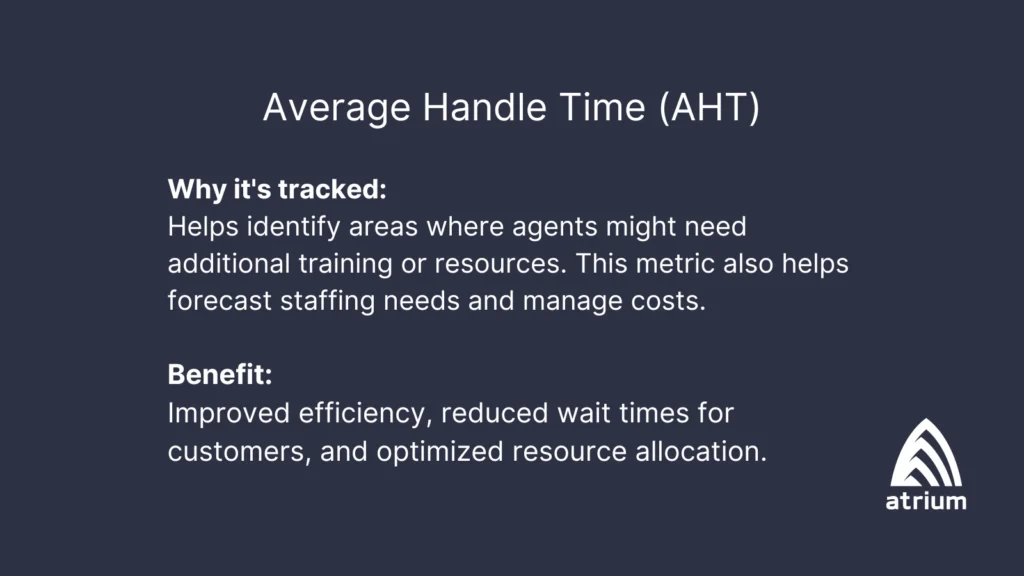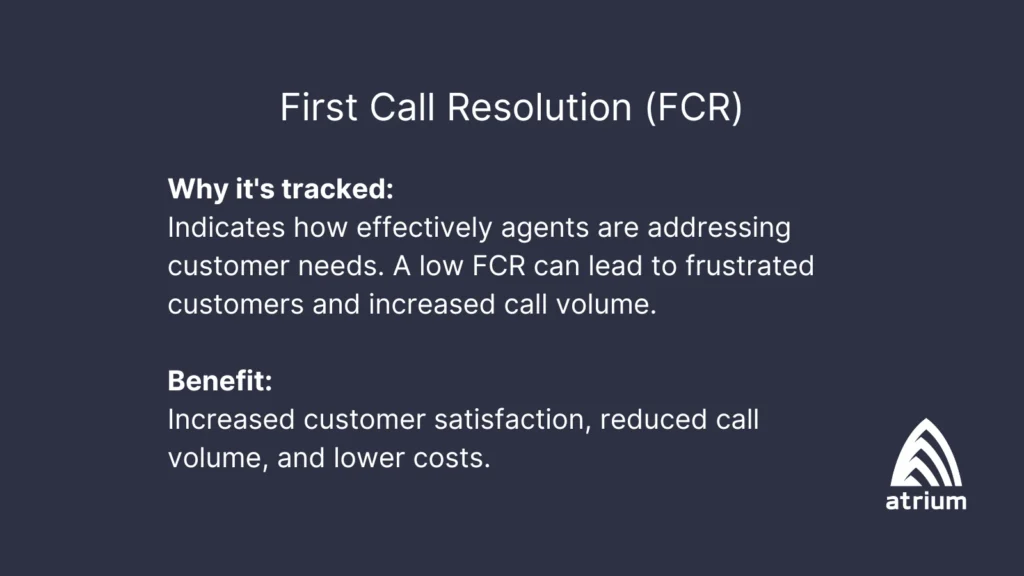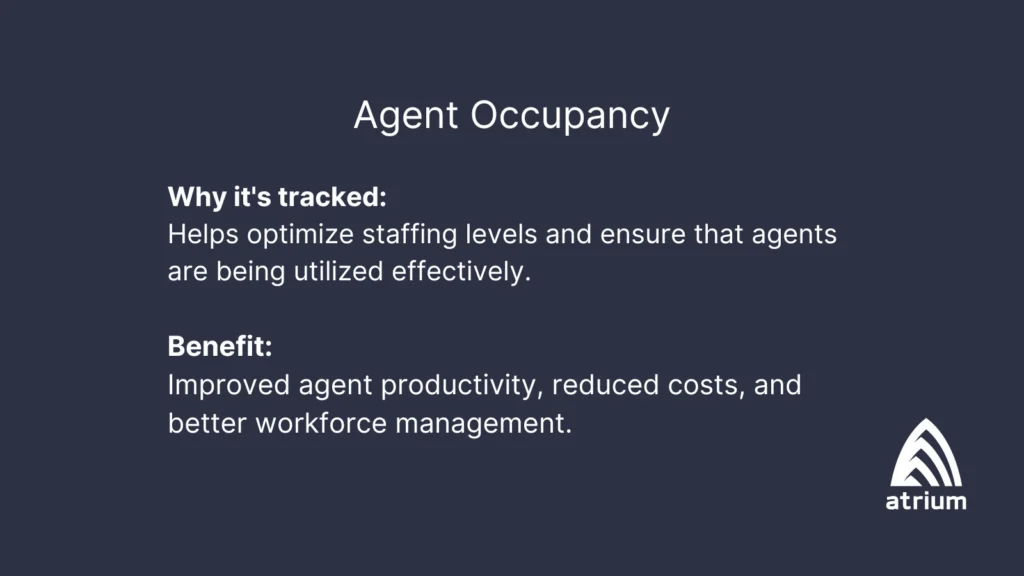How do today’s contact centers measure success? It’s more than just answering the phone, responding to a chat, or replying to emails. Success is about providing excellent customer service efficiently. To do that, customer service leadership tracks key metrics that show how well the contact center is performing. Think of these metrics as vital signs for the health of the contact center.
Let’s explore some of the most important metrics to measure contact center performance.
1. Average Handle Time (AHT): How long does an interaction take?
AHT measures the average time an agent spends handling a customer interaction, from the moment they answer the call or message to the moment the agent wraps up. A lower AHT generally means greater efficiency.
2. First Call Resolution (FCR): Solving the interaction on first contact
FCR measures the percentage of customer requests resolved during the first interaction with an agent. A high FCR is a sign of a well-trained and well-equipped team of agents.
3. Customer Satisfaction (CSAT): How happy are your customers?
CSAT measures how satisfied customers are with the contact center. This is often measured through surveys, feedback forms, and/or AI-driven call analysis.
4. Service Level: Meeting expectations
Service level measures the percentage of calls or messages answered within a specific timeframe. For example, a service level of 90% in 20 seconds means that 90% of interactions are answered within 20 seconds.
5. Agent Occupancy: Keeping agents engaged
Agent occupancy measures the percentage of time agents are actively engaged in handling customer interactions. This includes talk time, hold time, and wrap-up time.
6. Cost Per Contact: The bottom line
Cost per contact measures the average cost of handling a single customer interaction. This includes factors like agent salaries, technology costs, and overhead.
Track the right things for continuous call center improvement
These are just a few of the metrics that work together to paint a comprehensive picture of a contact center’s performance. By tracking and analyzing key indicators, your organization can identify areas for improvement, optimize operations, and provide a better experience for customers.
Need help? Atrium’s Salesforce Service Cloud Implementation Services can help your business develop functionality that supports the most important metrics for your business.













